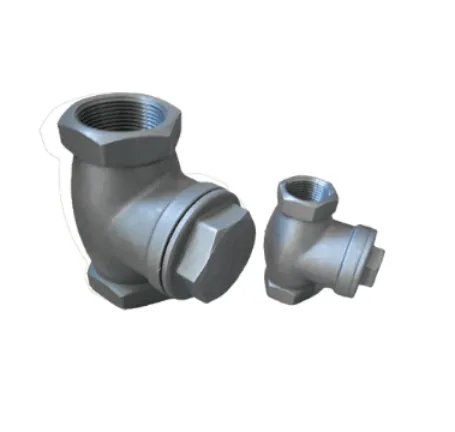Mobile:+86-311-808-126-83
E-mail:info@ydcastings.com
Exploring the Engineering Behind Valve Body Castings
Valves are fundamental components across countless industries—from oil and gas pipelines to water treatment facilities and manufacturing systems. At the heart of every reliable valve lies a precisely engineered structure: the valve body castings. Designed to withstand extreme pressure, temperature, and corrosive environments, these cast components are critical for performance, safety, and longevity. As industry demands grow for customization and durability, innovations in valve casting and material science are reshaping how valves are designed and deployed.
The Structural Core of Industrial Systems: Valve Body Castings
Valve body castings form the main pressure-retaining structure of a valve, providing the strength needed to control the flow of liquids, gases, or slurries under variable conditions. These components are typically manufactured using precision casting techniques such as sand casting or investment casting, depending on application needs and complexity.
Quality control in valve body castings is critical. Flaws like porosity or misalignment can compromise sealing integrity and pressure tolerance. To meet industrial-grade performance, these castings are often made from materials like ductile iron, carbon steel, or stainless steel, which balance strength, corrosion resistance, and machinability. With proper post-processing, including heat treatment and surface finishing, they become reliable cores of critical valve assemblies.
Understanding the Functional Design of the Corpo valvola
IL corpo valvola is the main casing of the valve, housing internal parts such as the disc, stem, and seats. It dictates how the valve connects with piping systems and controls internal flow characteristics. The design of the corpo valvola must consider factors like fluid type, pressure rating, and the need for maintenance accessibility.
Depending on the application, valve bodies can be single-piece, two-piece, or three-piece constructions, each offering different benefits in terms of maintenance and cost. For example, a two-piece valve body allows easier disassembly and cleaning, which is advantageous in chemical or food processing industries.
Modern design tools, such as CFD (computational fluid dynamics), help engineers optimize internal flow paths within the corpo valvola, reducing turbulence and energy loss, and increasing service efficiency.
Why High-Quality Valve Casting Matters in Critical Applications
Valve casting is the process through which the valve body and other metal components are formed. This manufacturing method not only shapes the external geometry but also ensures internal flow paths and sealing areas are formed accurately. Defects in valve casting can lead to leakage, pressure failure, and eventual system shutdown—outcomes that industries like oil, gas, and chemical processing cannot afford.
To ensure the integrity of valve casting, manufacturers often apply non-destructive testing (NDT), X-ray inspections, and pressure testing after casting. By refining mold design and controlling the cooling process, engineers can minimize internal stresses and grain inconsistencies, ultimately producing castings that meet international performance standards such as API, ANSI, and ISO.
Material Advantages of the Gate Valve Ductile Iron Option
A common and widely trusted material in valve applications is gate valve ductile iron. Ductile iron offers several advantages over traditional cast iron—it provides greater strength, impact resistance, and ductility, making it ideal for gate valves that operate in high-pressure and high-impact systems.
Gate valve ductile iron bodies can withstand shock and pipeline vibrations better than gray iron, and they exhibit improved corrosion resistance when coated or lined properly. These valves are commonly used in municipal water systems, irrigation networks, and industrial process pipelines where long service life and resistance to cracking are essential.
Additionally, ductile iron offers cost-efficiency by reducing the need for frequent replacements or repairs, even under cyclic loading and pressure surges.
The Broader Industrial Value of the Valve Itself
Every valvola, regardless of type—gate, globe, check, ball, or butterfly—serves the crucial function of regulating, stopping, or redirecting flow within a system. Its reliability hinges not only on internal mechanics but also on the structural integrity of its body and housing. This makes the choice of valve body castings and valve casting process a vital decision for engineers and procurement teams alike.
Modern industries demand valves that offer precision control, low maintenance, and strong resistance to wear and corrosion. Thanks to material innovations, smart sensor integration, and tighter production tolerances, today’s valves are more reliable and intelligent than ever before, capable of interfacing with automated systems to support real-time data monitoring and remote operation.
Valve FAQs----H2
What are the key advantages of using valve body castings in industrial valves?
Valve body castings allow complex shapes to be formed with high strength and pressure resistance, ensuring long-term durability and performance under extreme conditions.
How is a corpo valvola different from other valve components?
IL corpo valvola is the main structural shell of the valve, housing all internal parts and serving as the pressure-containing boundary between connected pipeline systems.
Why is quality control essential in valve casting?
Quality valve casting ensures defect-free components, preventing failure under pressure and maintaining the valve’s sealing performance and mechanical integrity.
What makes gate valve ductile iron a preferred material?
Gate valve ductile iron combines excellent tensile strength with shock resistance and corrosion tolerance, making it ideal for high-pressure and underground installations.
How do advancements in valvola design support industrial automation?
Modern valves integrate with smart control systems and sensors, allowing precise regulation and real-time feedback for improved system performance and reduced manual intervention.

-
Materials Used in Manufacturing Cap End Pipe FittingsNotiziaNov.24,2025
-
Material Properties of CF8M CastingNotiziaNov.24,2025
-
How to Inspect Pump Cap Ends for DamageNotiziaNov.21,2025
-
Backward Curved Impeller – Efficient Airflow Solutions for Industry | YD CastingsNotiziaNov.21,2025
-
Automobile Water Pump - Efficient, Quiet, Durable & ElectricNotiziaNov.21,2025
-
Impeller for Pumps – High-Efficiency, Durable, OEM-ReadyNotiziaNov.21,2025











